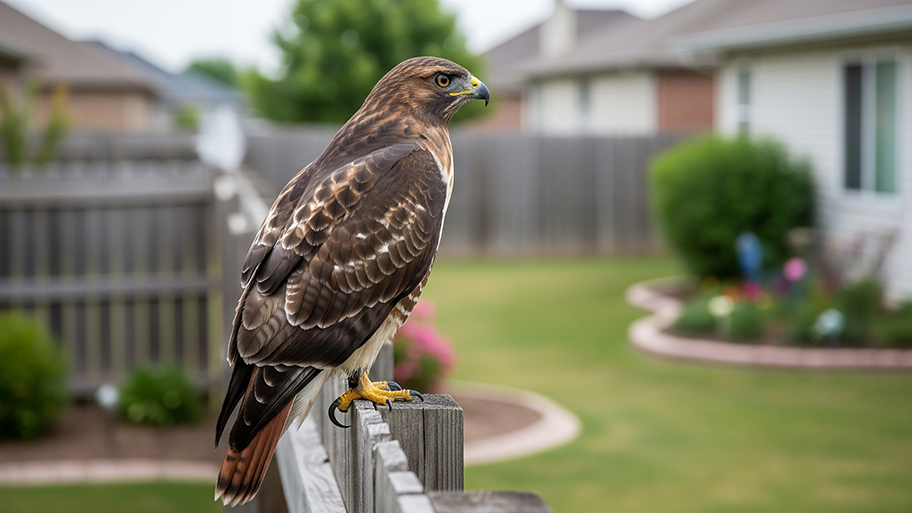
When budgeting for possum removal costs, consider number of animals, location, method of removal, and whether you do it yourself or hire a professional.
Punxsutawney Phil is cute on TV, but groundhogs can cause serious damage in your yard


Groundhog removal costs around $150 to $220, but a pro can identify damages caused by groundhogs and perform necessary repairs at the same time.
A pro will trap, transport, and relocate groundhogs, a time-consuming but more humane way to deal with them compared to extermination.
A wildlife control specialist can provide recurring services to ensure groundhogs and other pests don’t return and ruin your yard.
While Groundhog Day is a fun and silly tradition, a groundhog party in your garden is the last thing you want. These rodents can tear up your lawn and devour your precious plants, whether it’s a garden full of flowers or veggies. If you’ve found tunnels, soil mounds, and gnawed-up plants in your yard, here’s how to get rid of groundhogs for good.
You probably love groundhogs when they are predicting an early spring, but less so when they gnaw their way through your vegetable garden. Also known as woodchucks, groundhogs are a type of rodent that burrows for food and shelter. Although they measure less than 2 feet long and weigh just 8 to 12 pounds, they can eat about 1 pound of food per day.

If you notice signs of groundhogs in your yard, you’ll want to get to work right away on getting rid of these animals. The longer you wait, the more damage they can do above and below ground.
From spicy peppers to garlic, there are several homemade wildlife remedies that can send groundhogs packing. They may also feel threatened by fur and urine of other animals, too.
Sprinkle red pepper, talcum powder, or garlic around the garden.
Blood meal may also deter groundhogs while also benefiting the plants.
Scatter hair clippings or pet fur around the yard.
Soak cloths in ammonia, then place them around the garden.
When they are not in their burrows, pour castor oil around the tunnel entrances.
Place clumps of kitty litter with cat urine right inside a tunnel entrance.
Groundhogs aren’t likely to hang around if they feel threatened, so consider pinwheels or wind chimes to deter them. You can also find ultrasonic devices that send vibrations underground to scare off the groundhogs. Noise and motion deterrents aren’t a great long-term solution, but they might keep groundhogs away until you can establish a more permanent option, such as installing a fence or hiring animal control services.

If you want to keep these pests out of the garden, install a fence around your flowers or vegetables. Make sure the fence is at least 1 foot underground to keep the groundhogs from burrowing under it. Choose a fence that is at least 3 feet high, too, or they can hop right over it.
Trapping and releasing these animals is an effective and humane option. It’s best to hire an animal control service to safely trap and release them. If you try to DIY groundhog removal, avoid touching the creatures to minimize risk of diseases like Lyme disease, rabies, or tularemia. Also, you’ll need to release groundhogs up to 100 miles from their burrows, or they might return.
If your plants look chewed up or that zucchini you were waiting to pick at just the right moment has suddenly disappeared, you may be dealing with groundhogs. Another telltale sign is tunnels or mounds around the yard. Groundhog tunnels are about 10 to 12 inches wide, and you’ll typically see a few of their tunnel entrances around your property.
Groundhogs love yards that provide their preferred food sources. They're herbivores with a taste for various plants, including vegetables, fruits, and clover. If your yard has these food options, groundhogs might think you are running an all-you-can buffet.
When it comes to shelter, they find yards with overgrown vegetation, bushes, tall grass, and loose or sandy soil irresistible.
Whether you’ve eradicated the groundhogs taking over your yard and want to keep them from coming back or you’ve just planted a veggie garden and don’t want to deal with these rodents at all, here are some common ways to keep groundhogs away from your lawn and garden.
Although they like to tunnel underground for shelter, a stack of wood is also a cozy, inviting place for groundhogs to nest. Make sure to clear out any woodpiles that could become a nesting site for these pests.
Even if you trap and relocate a groundhog, another one may come to your yard to take advantage of the empty tunnels. Dig out about 1 foot deep into the tunnel, then place a 3-square-foot wire panel over the tunnel entrance. Cover it with soil to close off the hole.
Your landscape is a lot less attractive to hungry groundhogs when there’s not much to eat. Make sure to rake up debris, like leaves and twigs. If you grow produce, harvest as much as you can each day to get to the food before the groundhogs do.
This method is a bit of a gamble, but if you just can’t stomach moving these creatures from your yard to another random location, you can try to deter them from destroying your garden by giving them their own. Create a small garden full of groundhog favorites, like clover, alfalfa, peas, or leafy greens, near their tunnel entrance.
Professional groundhog removal costs about $150 to $200, depending on the type of removal and how many groundhogs are in the yard. Trapping, transport, and relocation of groundhogs is usually a more expensive option, but it’s a more humane way to deal with groundhogs compared to extermination. Hire a local animal removal technician to safely and efficiently deal with groundhogs before they tear up your lawn and garden.
Deirdre Sullivan contributed to this article.
From average costs to expert advice, get all the answers you need to get your job done.

When budgeting for possum removal costs, consider number of animals, location, method of removal, and whether you do it yourself or hire a professional.

Your skunk removal cost will depend on several factors, including type, location, and more. Our guide will cover everything you need to know about skunk removal costs.

While moles eat termites, ants, and more, they can still be a nuisance. Learn yard mole removal costs, including humane options to decide what’s right for you.

Scorpions are a common pest in warm, dry climates. Learn how to effectively deter, prevent, and kill scorpions in and around your home and property.

Hawks are expert overhead hunters. To protect your pets and the little birds visiting your backyard, learn how to keep hawks away with these humane strategies.

While we might use possum and opossum interchangeably, there are small differences between the two animals that you should know about.